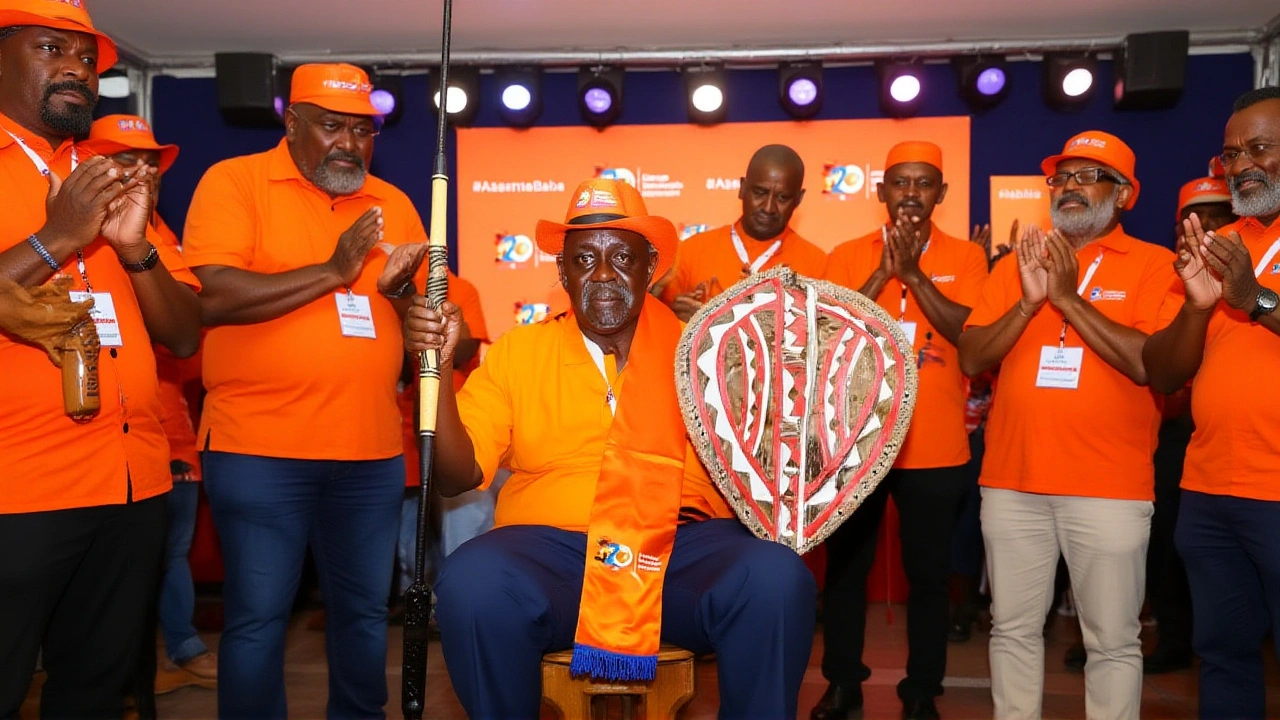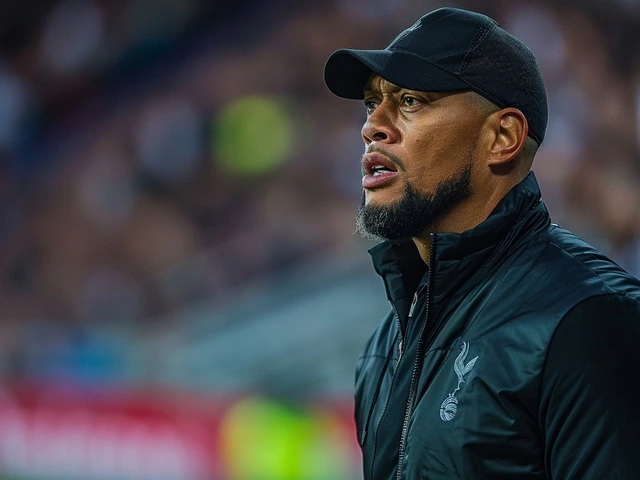When Dr. Oburu Oginga walked into Orange House on October 27, 2025, he didn’t just chair a meeting—he held together the fraying threads of Kenya’s most consequential political machine. The 82-year-old Siaya Senator, elder brother of the late Raila Odinga, had been thrust into leadership just 12 days after Raila’s death in India on October 15, 2025. His first official act as Acting Party Leader? Convening the Orange Democratic Movement’s Central Management Committee (CMC) in Lavington, Nairobi. The room was quiet. But the tension? Deafening.
A Party at a Crossroads
ODM was never just a party. It was a movement. Born in 2005 out of protest against electoral fraud, it became the engine that propelled Kenya’s political evolution for two decades under Raila’s iron grip. Now, with Raila gone, the movement is being pulled in opposite directions. One side—led by Edwin Sifuna, the party’s 42-year-old Secretary General—wants to break from President William Ruto’s coalition and return to opposition. The other, backed by Oburu and senior figures like Timothy Bosire, the National Treasurer, argues that ODM must honor Raila’s legacy by staying in the government and delivering on the ten-point agenda."We don’t want to rush," Oburu told guests at a wedding in Serena Hotel on October 25. "You don’t cross the bridge before you reach the bridge." His words were a rebuke to the party’s youth wing, many of whom have taken to social media to declare ODM’s non-alignment with Ruto’s 2027 bid. But Oburu’s calm demeanor masks a deeper reality: he’s steering a ship with no captain’s log. Raila didn’t leave a succession plan. Just a void.
The Petition That Shook Orange House
Just days after Oburu was formally confirmed as Party Leader on November 13, 2025—during ODM’s 20th Anniversary planning—came the bombshell. A group of life members led by Rachael Tabitha filed a petition demanding his immediate resignation. Their accusation? That Oburu had violated Article 6.2.2(b) of the ODM Constitution by sidelining long-serving members and bypassing internal democracy. "The party was not made in a bedroom," Tabitha declared. "It was born out of protest. And we bled for it."
The petition didn’t just ask for Oburu’s removal. It demanded an urgent National Delegates Convention (NDC)—the only body constitutionally empowered to ratify a new leader—and full recognition of life members’ rights. And it came with a 30-day ultimatum: meet our demands by December 13, 2025, or we walk out. That’s not just a threat. It’s a potential civil war within a party that holds 58 parliamentary seats and controls three county governments.

Why This Matters Beyond ODM
Ruto’s administration relies on ODM’s parliamentary support to pass legislation. Without it, his second-term ambitions could stall before they even begin. The party’s internal chaos isn’t just messy—it’s destabilizing. If Sifuna’s youth faction splits off, it could trigger a wave of defections among county officials and grassroots activists. Already, three ODM county chairs have quietly paused public endorsements of Ruto’s 2027 campaign.
Meanwhile, Oburu’s age and health are whispered about in Nairobi’s political circles. He’s 82. He uses a cane. He speaks slowly. And yet, he’s the only figure with enough historical legitimacy to keep the party from imploding. But legitimacy doesn’t win elections. Momentum does.
What’s Next? The NDC Countdown
The National Delegates Convention, originally slated for January 2026, is now under pressure to be moved up. If it happens before December 13, Oburu might survive. If it doesn’t—or if the petitioners walk out—the party could fracture into two: one loyal to the old guard, another to the new.
Observers note a chilling parallel: in 2017, ODM’s internal squabbles helped Ruto’s predecessor, Uhuru Kenyatta, win re-election. Now, history may repeat itself—if ODM can’t find unity. The party’s 2027 electoral performance won’t just hinge on who leads it. It’ll depend on whether the people who built it still believe in it.

Behind the Scenes: The Forgotten Voices
Beyond the headlines, there are hundreds of ODM life members—people who organized rallies in 2007, who lost jobs during the 2008 violence, who slept in tents during the 2013 campaigns. They’re not on Twitter. They don’t have TikTok accounts. But they still hold membership cards. And they feel erased.
"We were there when Raila was jailed," said one 68-year-old member from Kisumu, who asked not to be named. "Now we’re told our voices don’t matter because we’re not young enough. That’s not leadership. That’s betrayal."
Oburu’s team insists the party is "not divided," but internal documents obtained by this outlet show at least 14 regional branches have submitted formal complaints about lack of consultation on policy direction. The CMC meeting on October 27 didn’t resolve anything. It just delayed the reckoning.
Frequently Asked Questions
Why is Oburu Oginga’s leadership controversial?
Oburu was appointed acting leader by the National Executive Committee after Raila’s death, but his formal confirmation on November 13, 2025, bypassed the National Delegates Convention—the constitutionally mandated body for leadership ratification. Critics argue this undermines internal democracy, especially since he’s not a long-time ODM activist like Raila, and many feel he’s being used as a placeholder by Ruto-aligned factions.
What happens if ODM splits before 2027?
A split could create a new opposition bloc led by Edwin Sifuna’s youth faction, potentially aligning with other anti-Ruto parties like NASA or the Amani Coalition. This could fragment the vote in key western and coastal constituencies, giving Ruto an easier path to re-election. It would also cost ODM its current parliamentary majority and weaken its leverage in coalition negotiations.
How does this affect ordinary Kenyans?
ODM controls key ministries overseeing infrastructure, agriculture, and devolution. If internal chaos delays policy implementation—like the ten-point agenda promised under Raila—counties like Siaya, Kisumu, and Nyanza could see stalled development projects. Voters in those areas may lose faith in the party’s ability to deliver, affecting turnout and trust in governance.
Is Oburu Oginga really the right person to lead ODM?
Oburu has deep credibility as Raila’s brother and a former MP, but he lacks the grassroots mobilization skills that defined Raila’s leadership. At 82, he’s more symbolic than strategic. His strength is unity; his weakness is vision. Without a clear successor plan or inclusive reform, his leadership may only delay the inevitable power struggle—not prevent it.
What role does President William Ruto play in this crisis?
Ruto has publicly vowed to "protect" ODM from being "auctioned," a clear signal he wants to keep the party in his coalition. Behind the scenes, his allies have reportedly encouraged Oburu’s rise and discouraged Sifuna’s faction. While Ruto denies meddling, his silence on the petition and his presence at Raila’s funeral suggest he’s betting on stability over democracy within ODM.
Can ODM survive without Raila Odinga?
Yes—but only if it reinvents itself. Raila was the glue. The party now needs a new narrative: not just opposition or coalition, but a platform for youth, accountability, and devolution. Without that, ODM risks becoming a hollow shell, remembered as the party that outlived its purpose. The next 30 days will determine whether it’s a phoenix—or a ghost.






JAYESH KOTADIYA
November 27, 2025 AT 16:27Surbhi Kanda
November 29, 2025 AT 01:49Vikash Kumar
November 30, 2025 AT 05:44Tanya Bhargav
November 30, 2025 AT 08:22Sandhiya Ravi
November 30, 2025 AT 19:03Sanket Sonar
December 2, 2025 AT 17:26Bharat Mewada
December 3, 2025 AT 21:26Bhavesh Makwana
December 5, 2025 AT 03:47Amita Sinha
December 6, 2025 AT 20:08Vaneet Goyal
December 8, 2025 AT 05:56Ambika Dhal
December 9, 2025 AT 08:58Vidushi Wahal
December 11, 2025 AT 00:51Alok Kumar Sharma
December 11, 2025 AT 14:51pravin s
December 12, 2025 AT 18:18